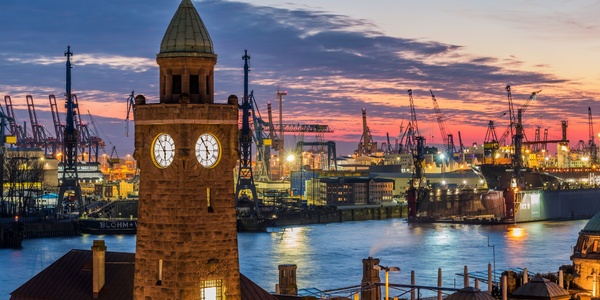Fenesta brings down TAT by more than 50% with Quixy
Customer Company Size
Large Corporate
Region
- Asia
Country
- India
Product
- Quixy Platform
Tech Stack
- Workflow Automation
- Business Process Management
Implementation Scale
- Enterprise-wide Deployment
Impact Metrics
- Productivity Improvements
- Customer Satisfaction
- Employee Satisfaction
Technology Category
- Platform as a Service (PaaS) - Application Development Platforms
Applicable Industries
- Construction & Infrastructure
- Consumer Goods
Applicable Functions
- Sales & Marketing
- Business Operation
Use Cases
- Process Control & Optimization
- Predictive Maintenance
- Remote Collaboration
Services
- System Integration
- Software Design & Engineering Services
About The Customer
Fenesta is India's largest windows and doors brand, part of the DCM Shriram Group, which has a rich history dating back to 1889. The company is renowned for its transparent work culture and diversity. Fenesta specializes in designing uPVC and System Aluminum Windows and Doors that are tailored to withstand India's extreme climatic conditions. It is the only company in India that manufactures its uPVC blend and profiles, ensuring high-quality and durable products. With a sales and service presence in over 327 cities, Fenesta operates through 20 sales offices, 4 factories, 9 signature studios, and 178 channel partner showrooms, supported by a robust direct sales force of more than 500 executives.
The Challenge
Fenesta faced significant challenges in managing their sales order requests due to a manual process that was prone to errors and inefficiencies. The sales team had to handle requests through emails and reminders, leading to delays and a lack of visibility into the status of requests. This ad hoc process resulted in a turnaround time (TAT) of 3-4 days, causing frustration among sales executives and impacting customer satisfaction. The lack of a standardized workflow and control over the process further exacerbated the issue, making it difficult for salespeople to close approvals and risking customer loss.
The Solution
Fenesta collaborated with Quixy to automate their sales feasibility process. The Quixy platform was used to create a robust process plan that addressed the gaps in the existing workflow. The new system allowed sales executives to submit feasibility requests from any device, which would then follow a pre-defined workflow. Each request generated a Unique Requisition ID, enabling easy tracking and calculation of TAT. The automation provided real-time visibility into the status of requests, eliminating the need for manual follow-ups and reminders. Notifications and reminders were automated, significantly reducing the TAT and improving process control and transparency. The implementation of Quixy resulted in higher sales team satisfaction, accurate information collection, and efficient routing of requests, ensuring a streamlined and error-free process.
Operational Impact
Quantitative Benefit

Case Study missing?
Start adding your own!
Register with your work email and create a new case study profile for your business.
Related Case Studies.
.png)
Case Study
Improving Vending Machine Profitability with the Internet of Things (IoT)
The vending industry is undergoing a sea change, taking advantage of new technologies to go beyond just delivering snacks to creating a new retail location. Intelligent vending machines can be found in many public locations as well as company facilities, selling different types of goods and services, including even computer accessories, gold bars, tickets, and office supplies. With increasing sophistication, they may also provide time- and location-based data pertaining to sales, inventory, and customer preferences. But at the end of the day, vending machine operators know greater profitability is driven by higher sales and lower operating costs.

Case Study
IoT System for Tunnel Construction
The Zenitaka Corporation ('Zenitaka') has two major business areas: its architectural business focuses on structures such as government buildings, office buildings, and commercial facilities, while its civil engineering business is targeted at structures such as tunnels, bridges and dams. Within these areas, there presented two issues that have always persisted in regard to the construction of mountain tunnels. These issues are 'improving safety" and "reducing energy consumption". Mountain tunnels construction requires a massive amount of electricity. This is because there are many kinds of electrical equipment being used day and night, including construction machinery, construction lighting, and ventilating fan. Despite this, the amount of power consumption is generally not tightly managed. In many cases, the exact amount of power consumption is only ascertained when the bill from the power company becomes available. Sometimes, corporations install demand-monitoring equipment to help curb the maximum power demanded. However, even in these cases, the devices only allow the total volume of power consumption to be ascertained, or they may issue warnings to prevent the contracted volume of power from being exceeded. In order to tackle the issue of reducing power consumption, it was first necessary to obtain an accurate breakdown of how much power was being used in each particular area. In other words, we needed to be able to visualize the amount of power being consumed. Safety, was also not being managed very rigorously. Even now, tunnel construction sites often use a 'name label' system for managing entry into the work site. Specifically, red labels with white reverse sides that bear the workers' names on both sides are displayed at the tunnel work site entrance. The workers themselves then flip the name label to the appropriate side when entering or exiting from the work site to indicate whether or not they are working inside the tunnel at any given time. If a worker forgets to flip his or her name label when entering or exiting from the tunnel, management cannot be performed effectively. In order to tackle the challenges mentioned above, Zenitaka decided to build a system that could improve the safety of tunnel construction as well as reduce the amount of power consumed. In other words, this new system would facilitate a clear picture of which workers were working in each location at the mountain tunnel construction site, as well as which processes were being carried out at those respective locations at any given time. The system would maintain the safety of all workers while also carefully controlling the electrical equipment to reduce unnecessary power consumption. Having decided on the concept, our next concern was whether there existed any kind of robust hardware that would not break down at the construction work site, that could move freely in response to changes in the working environment, and that could accurately detect workers and vehicles using radio frequency identification (RFID). Given that this system would involve many components that were new to Zenitaka, we decided to enlist the cooperation of E.I.Sol Co., Ltd. ('E.I.Sol') as our joint development partner, as they had provided us with a highly practical proposal.

Case Study
Splunk Partnership Ties Together Big Data & IoT Services
Splunk was faced with the need to meet emerging customer demands for interfacing IoT projects to its suite of services. The company required an IoT partner that would be able to easily and quickly integrate with its Splunk Enterprise platform, rather than allocating development resources and time to building out an IoT interface and application platform.

Case Study
Bridge monitoring in Hamburg Port
Kattwyk Bridge is used for both rail and road transport, and it has played an important role in the Port of Hamburg since 1973. However, the increasing pressure from traffic requires a monitoring solution. The goal of the project is to assess in real-time the bridge's status and dynamic responses to traffic and lift processes.








